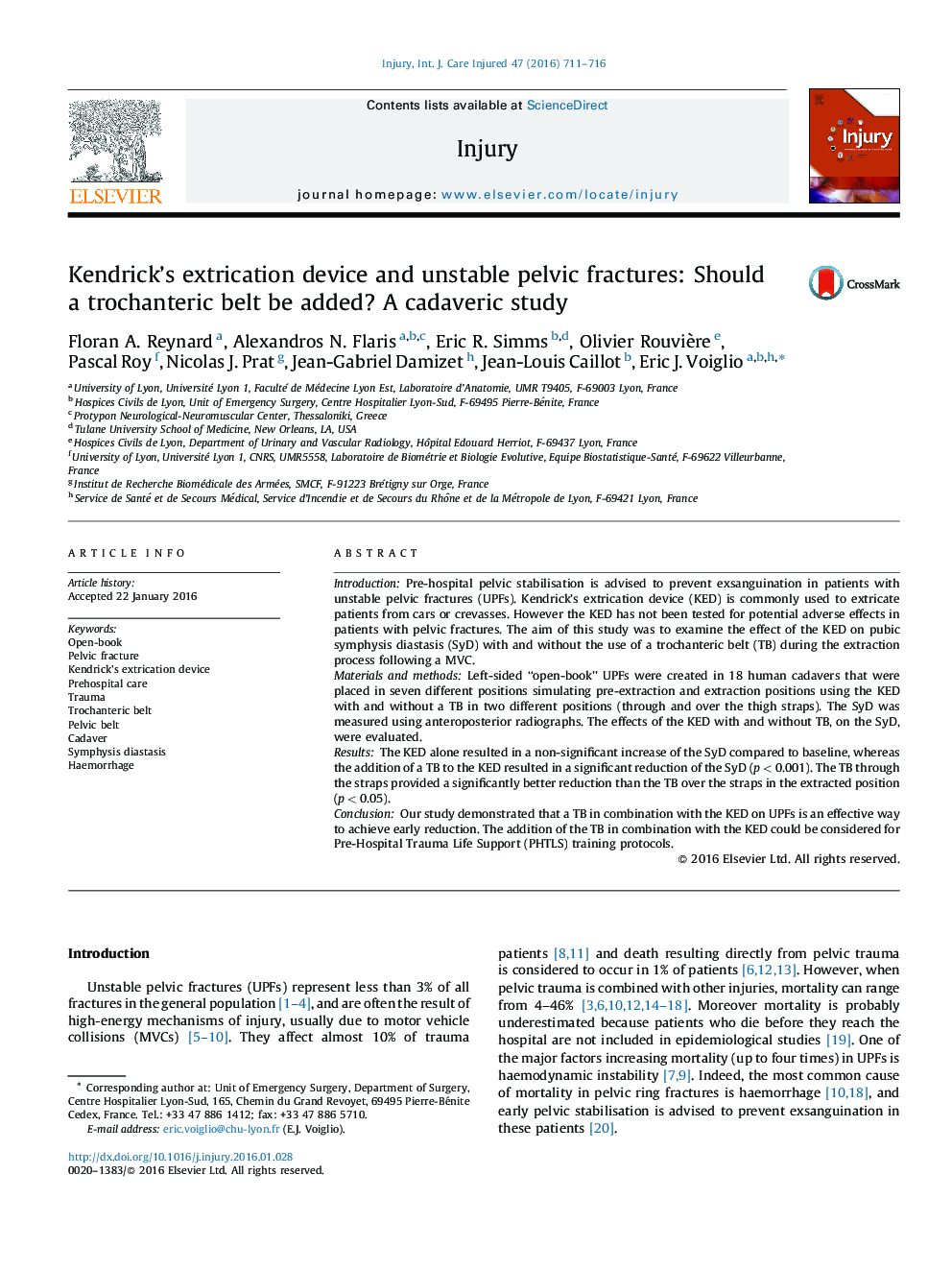| Article ID | Journal | Published Year | Pages | File Type |
|---|---|---|---|---|
| 3238705 | Injury | 2016 | 6 Pages |
IntroductionPre-hospital pelvic stabilisation is advised to prevent exsanguination in patients with unstable pelvic fractures (UPFs). Kendrick's extrication device (KED) is commonly used to extricate patients from cars or crevasses. However the KED has not been tested for potential adverse effects in patients with pelvic fractures. The aim of this study was to examine the effect of the KED on pubic symphysis diastasis (SyD) with and without the use of a trochanteric belt (TB) during the extraction process following a MVC.Materials and methodsLeft-sided “open-book” UPFs were created in 18 human cadavers that were placed in seven different positions simulating pre-extraction and extraction positions using the KED with and without a TB in two different positions (through and over the thigh straps). The SyD was measured using anteroposterior radiographs. The effects of the KED with and without TB, on the SyD, were evaluated.ResultsThe KED alone resulted in a non-significant increase of the SyD compared to baseline, whereas the addition of a TB to the KED resulted in a significant reduction of the SyD (p < 0.001). The TB through the straps provided a significantly better reduction than the TB over the straps in the extracted position (p < 0.05).ConclusionOur study demonstrated that a TB in combination with the KED on UPFs is an effective way to achieve early reduction. The addition of the TB in combination with the KED could be considered for Pre-Hospital Trauma Life Support (PHTLS) training protocols.
